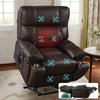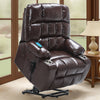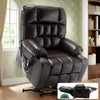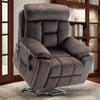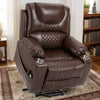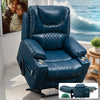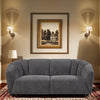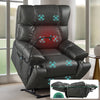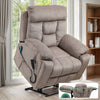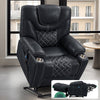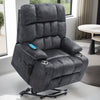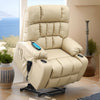Understanding the Importance of Ergonomic Chairs for Seniors
Ergonomics and Senior Comfort: Why Size Matters
As we age, our bodies need more support and comfort. This is where ergonomic chairs come in handy.

They are designed to fit the body's natural shape and movements. For seniors, the right size is crucial.
Smaller chairs are often better for seniors. They take up less space and are easier to move around.
This is important in senior living spaces where room may be limited.
Compact chairs also make it easier for seniors to get in and out. This reduces the risk of falls and
injuries. The right size chair can make a big difference in a senior's daily comfort and safety.
The Health Benefits of Using Ergonomic Chairs
Ergonomic chairs offer many health benefits for seniors. They help maintain good posture, which is
key to reducing back pain. Good posture also helps with breathing and digestion.
These chairs can also improve circulation. They often have features like adjustable height and tilt.
This allows seniors to find the most comfortable position for their body.
Regular use of ergonomic chairs can help reduce joint pain and stiffness. This is especially
important for seniors with arthritis or other mobility issues. Over time, this can lead to better
overall mobility and quality of life.
Top Small Massage Chairs for Seniors
Identifying the Best Features in Small Massage Chairs
When looking for small massage chairs for seniors, certain features stand out:

- Compact size: Should fit well in small living spaces
- Easy-to-use controls: Large buttons and simple settings
- Multiple massage modes: For different needs and preferences
- Heat therapy: To soothe aches and pains
- Adjustable intensity: To cater to individual comfort levels
- Sturdy construction: For safety and durability
- Comfortable upholstery: Soft yet supportive materials
- Recline function: For relaxation and improved circulation
These features ensure that the chair is not only comfortable but also safe and effective for seniors
to use. The right combination can greatly enhance the massage experience.
How to Determine the Right Size for Your Senior's Needs
Choosing the right size massage chair is crucial. Here are some steps to follow:
- Measure the available space: Consider doorways and room layout
- Check the senior's height and weight: Ensure the chair can support them
- Consider mobility: Choose a chair that's easy to get in and out of
- Test the seat depth: The senior's feet should touch the ground when seated
- Check the backrest height: It should support the entire back
- Look at armrest height: They should allow for comfortable arm positioning
- Consider adjustability: More options mean better personalization
Remember, the goal is to find a chair that fits both the senior and their living space. A chair
that's too big can be hard to use, while one that's too small may not provide enough support.
Integrating Small Massage Chairs into Senior Living Spaces
The Role of Massage Chairs in Senior Well-Being
Massage chairs play a vital role in senior well-being. They offer more than just comfort. These

chairs can help improve physical and mental health in several ways:
- Pain relief: Regular massages can ease chronic pain and stiffness
- Better sleep: Relaxation from massages can lead to improved sleep quality
- Reduced stress: Massage therapy helps lower stress and anxiety levels
- Improved circulation: Massages boost blood flow throughout the body
- Enhanced mood: The feel-good hormones released during massages uplift mood
- Increased flexibility: Regular use can help maintain or improve mobility
By providing these benefits, massage chairs become an important tool in senior care. They offer a
way for seniors to manage their health and comfort independently.
Tips for Selecting and Installing Massage Chairs in Your Facility
When adding massage chairs to a senior living facility, consider these tips:
- Assess individual needs: Not all seniors will need the same features
- Choose user-friendly models: Look for simple controls and clear instructions
- Consider maintenance: Opt for chairs that are easy to clean and maintain
- Plan for proper placement: Ensure chairs are in accessible, comfortable spots
- Provide training: Show staff and residents how to use the chairs safely
- Regular check-ups: Schedule routine maintenance to keep chairs in good condition
- Get feedback: Ask residents about their experience to make improvements
When installing:
- Ensure there's enough space around the chair for easy access
- Place chairs near power outlets for convenience
- Consider noise levels and place chairs in quieter areas
- Make sure lighting is adequate for safe use
By following these tips, you can create a safe and beneficial environment for seniors to enjoy the
comfort of massage chairs. This can greatly enhance their living experience and overall well-being.








